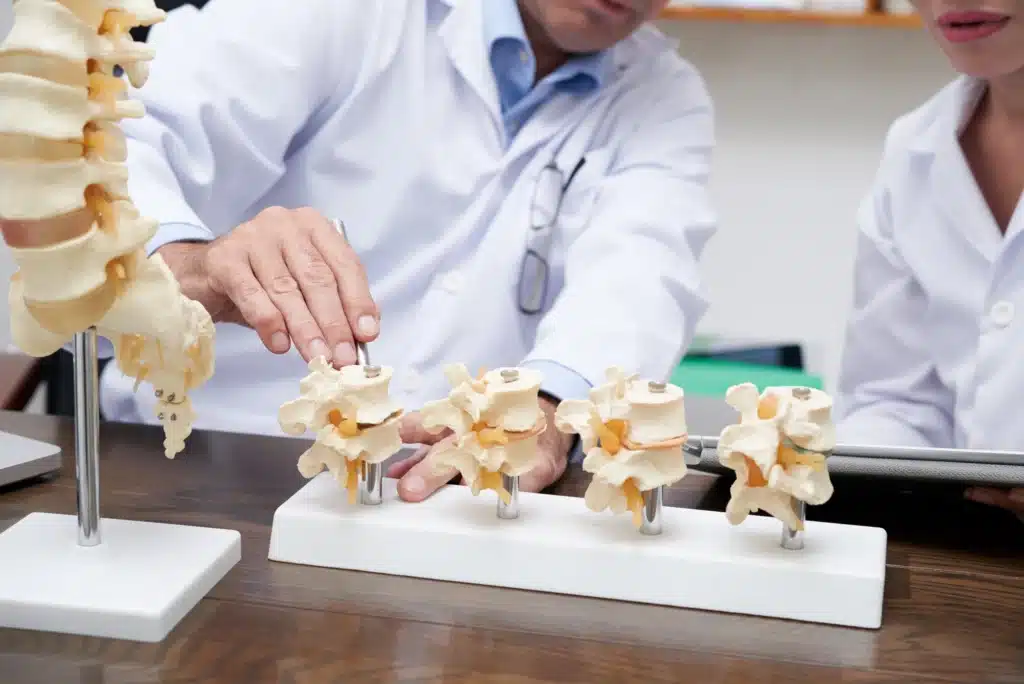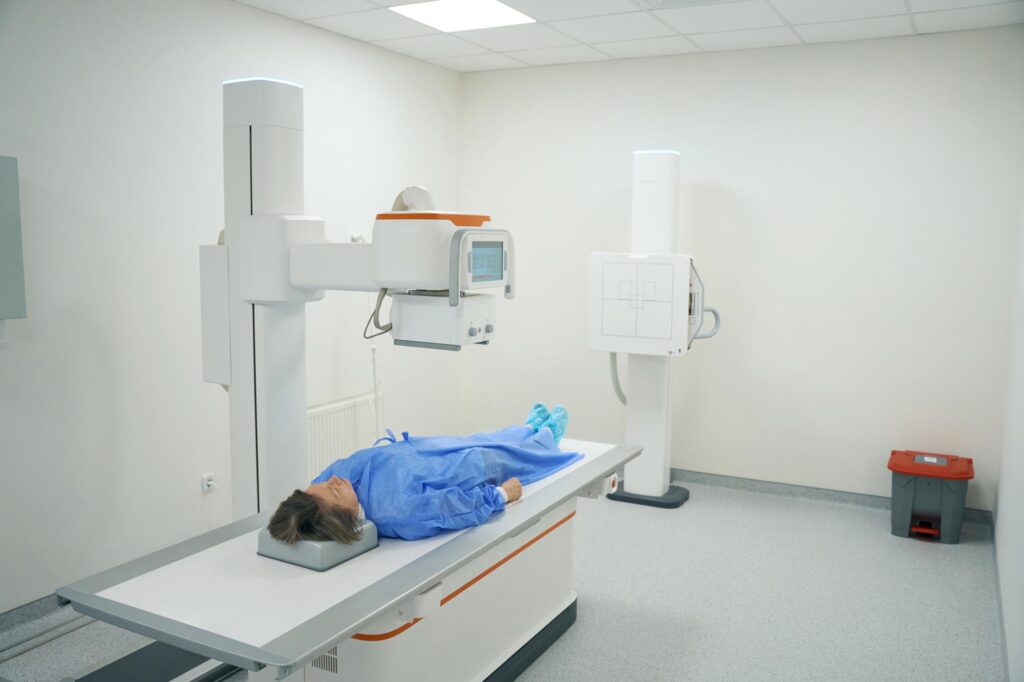
Table of Contents
ToggleImagine two or more of your vertebrae needing to be welded together. That’s the essence of spinal fusion lumbar surgery.
It’s a procedure aimed at eliminating the pain and instability in the lower back by fusing together the affected bones in your spine. The goal? To transform them into a single, solid bone.
This fusion process reduces motion between the vertebrae, which can be a significant source of pain for many.

Spinal fusion lumbar surgery often sounds like a term straight out of a medical journal that only healthcare professionals can decipher. However, this procedure affects many lives, offering a beacon of hope for those suffering from chronic back pain and spinal disorders.
With over 30 years of experience in the brain and spine surgery field, Long Island Neuroscience Specialists have been at the forefront of delivering comprehensive care and innovative treatments in this area. This guide aims to demystify spinal fusion lumbar surgery, providing you with essential insights and knowledge.
Spinal fusion lumbar surgery isn’t for everyone. It’s specifically designed for individuals who have not found relief from other treatments.
Those who benefit the most often suffer from conditions such as degenerative disk disease, spondylolisthesis, spinal stenosis, or severe scoliosis. Imagine your spine as a complex system of bones, discs, and nerves.
When something goes wrong in this system—like a disc wearing down or a bone moving out of place—it can lead to severe pain and instability. This surgery aims to fix that, giving your spine the stability it needs.
Our doctors at Long Island Neuroscience Specialists bring decades of experience in diagnosing and treating such conditions. With a deep understanding of the spine’s anatomy and the latest surgical techniques, they are uniquely positioned to determine who truly needs this surgery.
The decision is made after a comprehensive assessment, including imaging tests like X-rays, MRI scans, and CT scans, to get a clear picture of the spine’s condition.
Undergoing spinal fusion lumbar surgery is a significant decision, and like any major medical procedure, it comes with its benefits and risks. On the bright side, many patients experience a substantial reduction in pain and an improvement in their ability to perform daily activities.
There’s also the potential for corrected spinal alignment and increased stability, which can significantly enhance your quality of life.
However, it’s crucial to go into this with your eyes open to the potential risks, which, while generally low, include infection, blood clots, and nerve damage, among others. Our approach at Long Island Neuroscience Specialists is to provide you with all the information you need to weigh these benefits and risks.
Our team’s expertise ensures that the procedures we recommend and perform minimize these risks as much as possible.

Recovery from spinal fusion lumbar surgery is a journey, and it’s one that requires patience and adherence to your medical team’s advice. The initial hospital stay can vary from a few days to a week, depending on the complexity of the surgery and your overall health.
Pain management, physical therapy, and activity modifications are critical components of the recovery process.
The road to full recovery can be long, often taking several months. However, with the right care, including physical therapy and lifestyle adjustments, most patients find their way back to a more active and less painful life.
Our team at Long Island Neuroscience Specialists is with you every step of the way, providing personalized care plans and support to ensure the best possible outcome.
Preparation is a crucial step towards ensuring the success of your spinal fusion surgery. It’s not just about the physical readiness but also understanding and organizing your life around the surgery to ensure a smooth transition through recovery.
Here’s what you need to know:

The field of spinal surgery is continuously evolving, with new technologies and techniques improving outcomes for patients. Here are some of the latest advancements:
Making the decision to undergo spinal fusion lumbar surgery is personal and requires careful consideration of the potential benefits and risks. Here’s how to approach this decision:
Choosing to undergo spinal fusion lumbar surgery is a significant decision. Armed with the right information and supported by the expertise of Long Island Neuroscience Specialists, you’re in a strong position to make the choice that’s best for you.
As we conclude our guide to spinal fusion lumbar surgery, remember that this journey toward a pain-free life is a partnership between you and your medical team. Long Island Neuroscience Specialists, with over 30 years of excellence in brain and spine surgery, are dedicated to providing you with the best care.
Whether you’re just starting to explore treatment options or are ready to take the next step, we’re here to guide you. Visit our About Page to learn more about our expert team and to schedule a consultation.
Your path to recovery starts with a conversation. Let us be part of your journey to a better, healthier life.
GET IN TOUCH +
285 Sills Road
Building 5-6, Suite E
East Patchogue, NY 11772
(631) 475-5511
184 N. Belle Mead Road
East Setauket, NY 11733
(631) 675-6226
GET IN TOUCH +
285 Sills Road
Building 5-6, Suite E
East Patchogue, NY 11772
(631) 475-5511
184 N. Belle Mead Road
East Setauket, NY 11733
(631) 675-6226
SUBSCRIBE TO OUR NEWSLETTER +
Send us a Google review. Click this link and let us know how we did!
Review us on Yelp too.